This elementary art lesson for kids will feature adorable color chameleons while focusing on color theory and the science of chameleons. This project covers Common Core Standards for Language Arts and Science for grades K-2 which can be found at the end of the lesson.
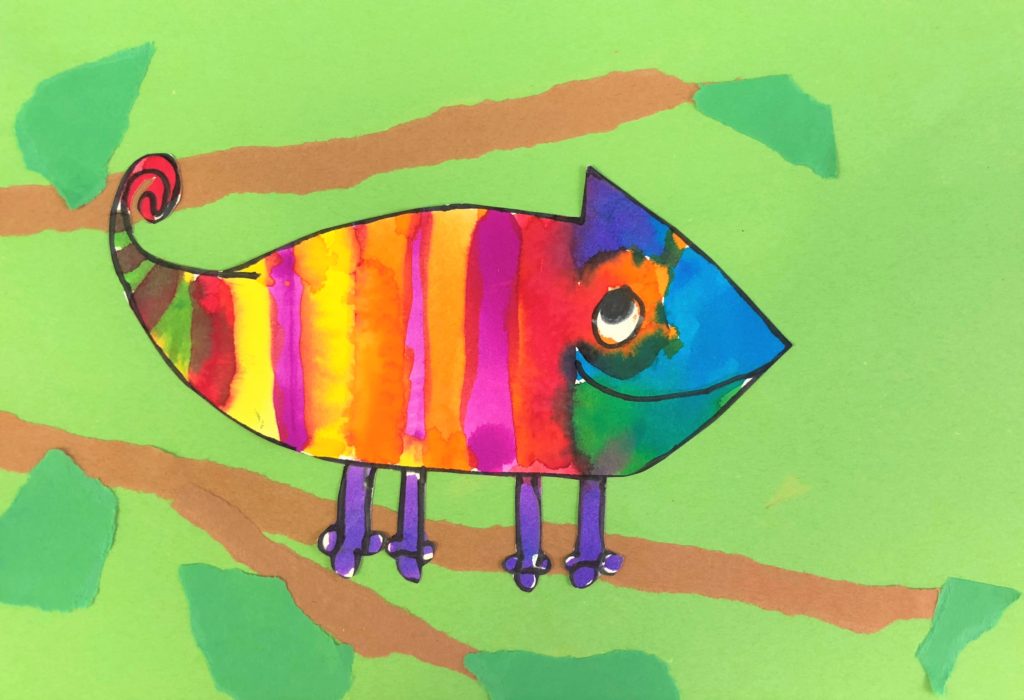
Grade Level
Kindergarten, 1st, 2nd – The examples in this lesson are by 1st graders.
Objective
In this Color Chameleons art lesson, students will create a chameleon using the element of art – Color Theory.
Time
6 – 30 min lessons
Materials
- Scissors
- Pencils
- Glue Stick – Elmer’s Glue Stick (E4062) (7 sticks)
- Sandwich bags (one per student)
- Shaving Cream (dollar store sells this and it works great!)
- 9×12 Watercolor paper – Canson (100510941) XL Series Watercolor Pad, 9″ x 12″, Fold-Over Cover, 30 Sheets
- Brushes – Acrylic Paint Brush Set, 1 Packs / 10 pcs Nylon Hair Brushes for All Purpose Oil Watercolor Painting Artist Professional Kits
- Liquid Water Colors – Sargent Art 22-6010 10-Count 8-Ounce Watercolor Magic Set
- Or this mini version for homeschooling – Sargent Art 22-6210 10-Count 4-Ounce Watercolor Magic
- Kleenex for blotting paint
- Black Sharpie Marker – SHARPIE Permanent Markers, Fine Point, Black, 2 Ct
- Bright (lime) Green – Pacon SunWorks Construction Paper, 9-Inches by 12-Inches, 50-Count, Bright Green (9603)
- Green and Brown Pacon Tru-Ray Construction Paper, 9″ x 12″, 10 Classic Colors, 50 Sheets (P103031)
Inspiration/Artist
I was inspired to make this lesson from this site: Click Here
Instruction with Questions
Day 1
Begin by reading these one or two fun books. You may read one or two today and save others for a follow up day:
“Mix It Up” by Herve Tullet
THIS ONE IS A MUST “A Color of His Own” by Leo Leoni
Begin by reading this fun book: The Day the Crayons Quit, by Drew Daywalt

“Babar’s Book of Color” by Laurent de Brunhoff
Next show a few videos.
The Colors Song | The Colours Song | Scratch Garden: Click Here
Sesame Street: OK Go – Three Primary Colors: Click Here
The Color Song: A Funny Song: Click Here
These next two are totally optional depending on your time frame.
Brain Games – Visible Spectrum: Click Here
As a fun end to the day, I have them create the colors with this activity. It only takes a few minutes and is a huge hit!
Use this Color Theory for kids inspired by Disney PowerPoint Presentation: Click Here
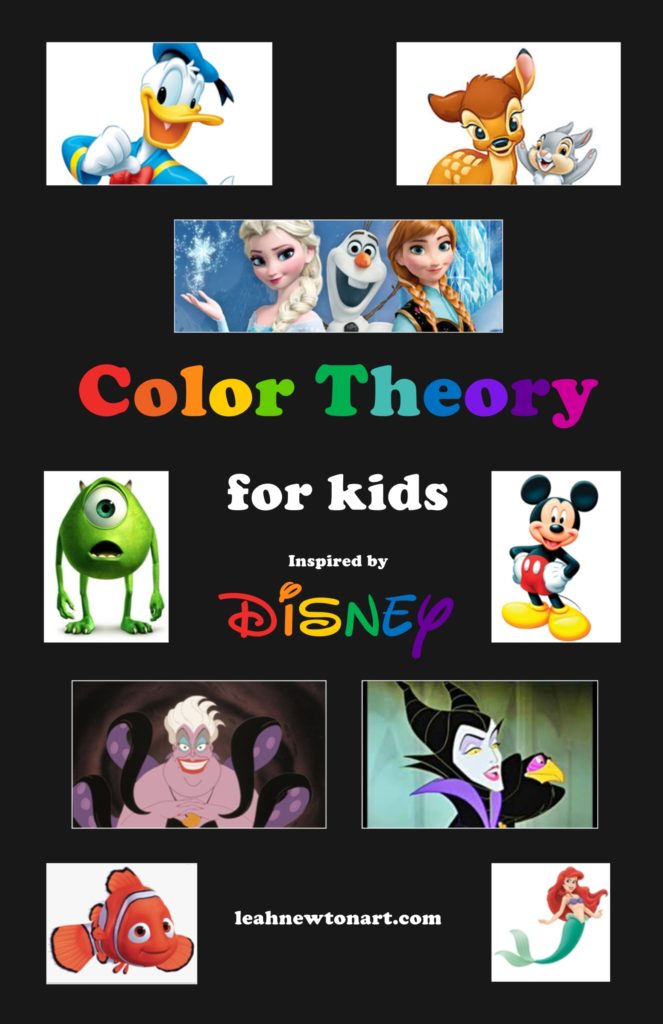
Step 1
Prepare baggies with a Chameleon on them. Here is a PDF Click Here This is a cleaned up from a FREE version I found on Teachers Pay Teachers Click Here for original.
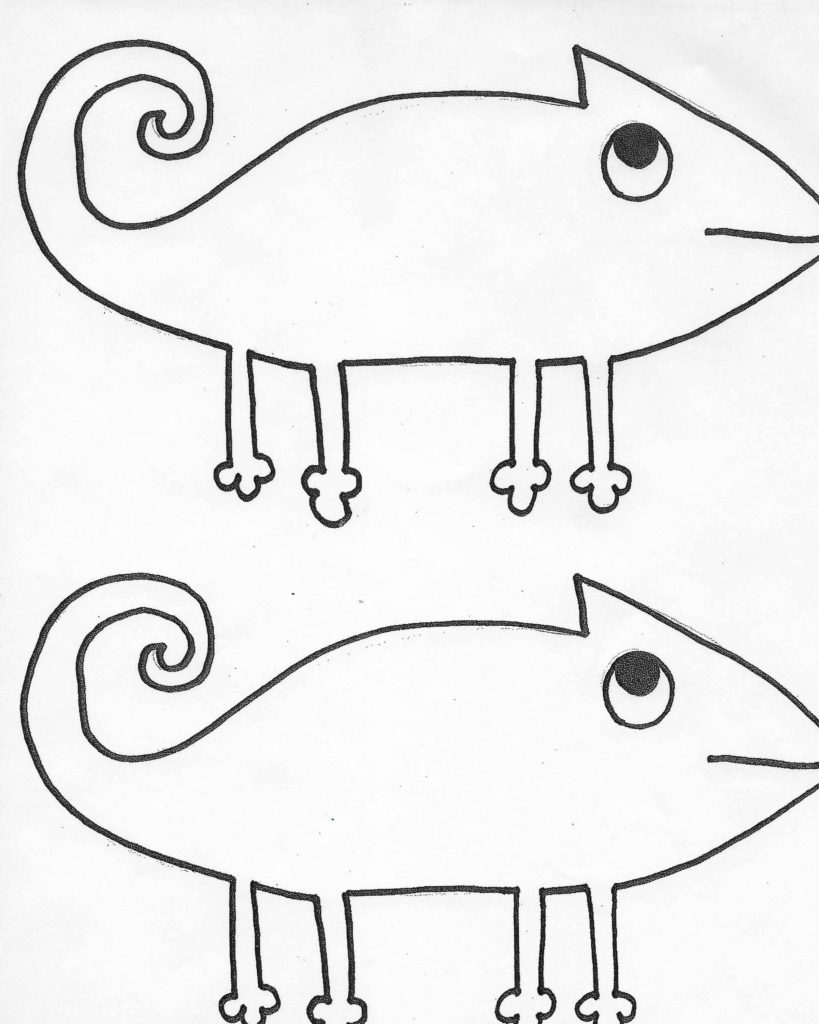
Trace the image onto a sandwich baggie with sharpie marker.
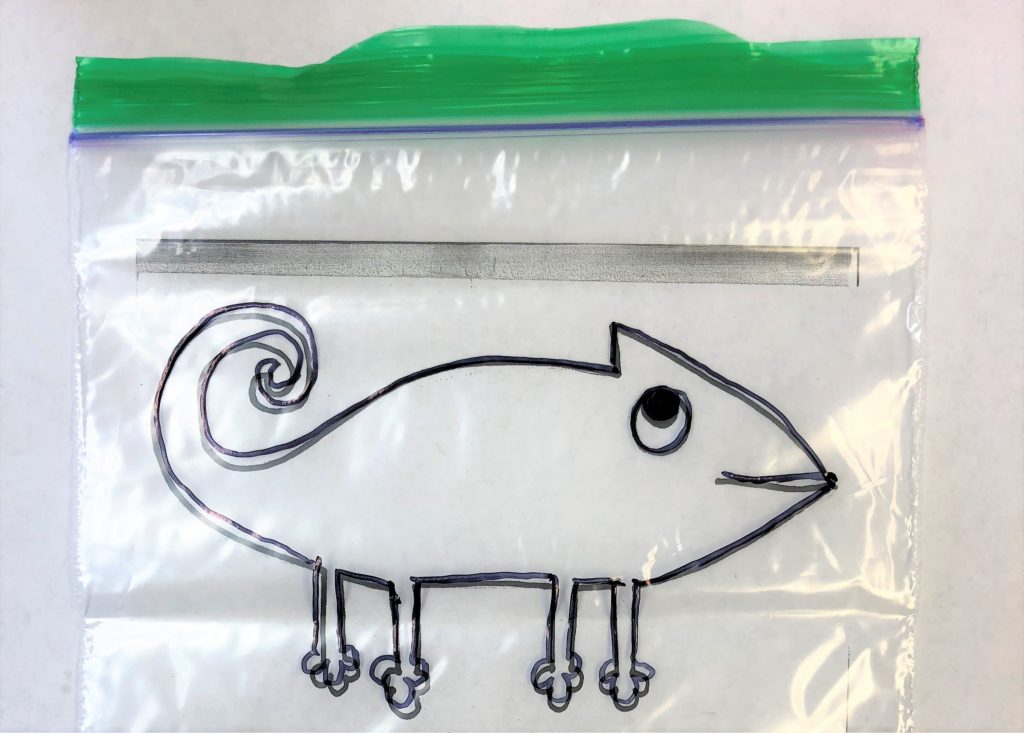
Add Shaving Cream (Dollar Tree) – Hint: Do not put more than maybe a cup worth into a sandwich sized baggie.
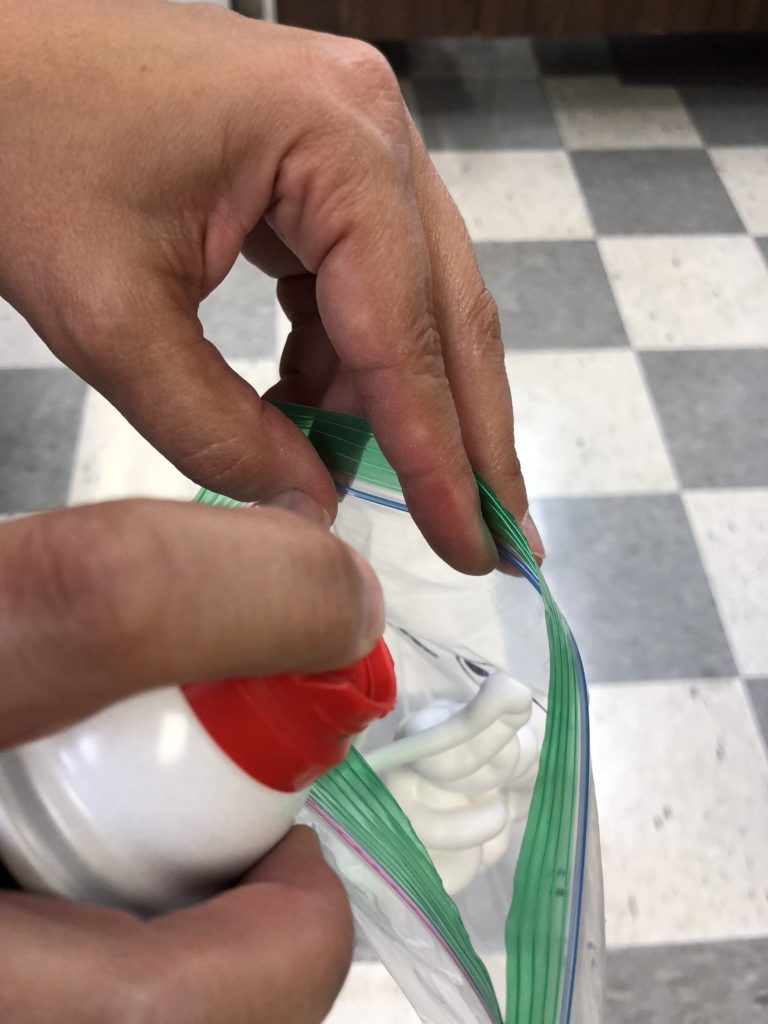
Step 2
Liquid water colors – They pick 2 of the three primary colors; red, yellow, blue
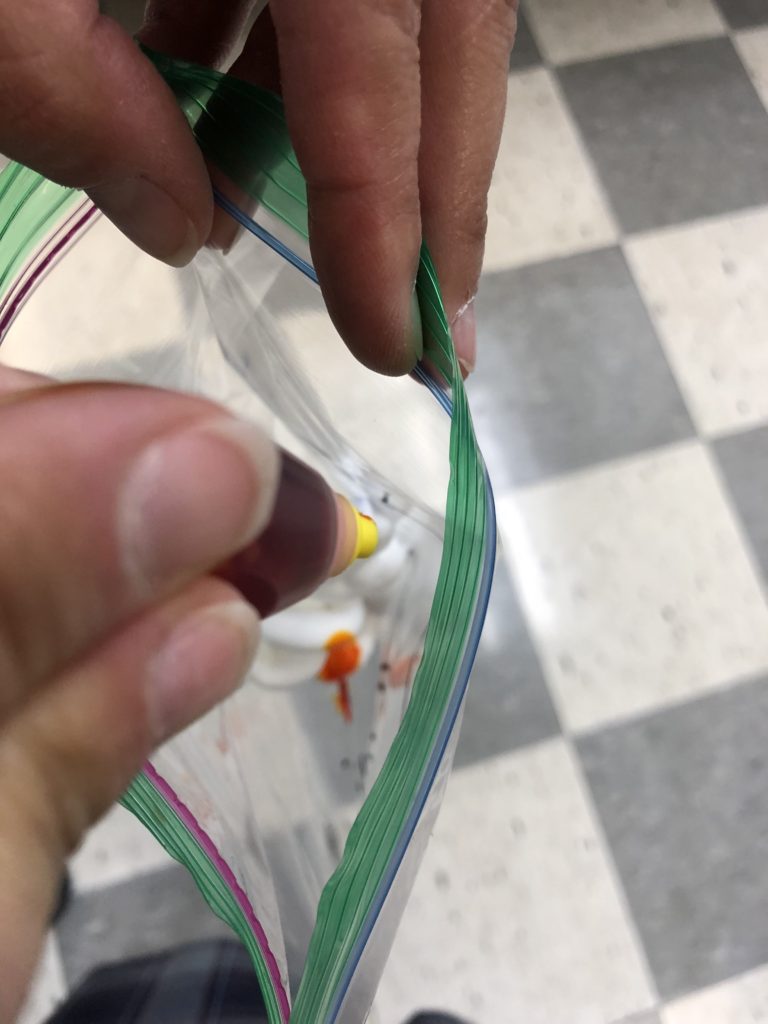
I ask the students which two colors they would like to add. This student chose yellow and blue.
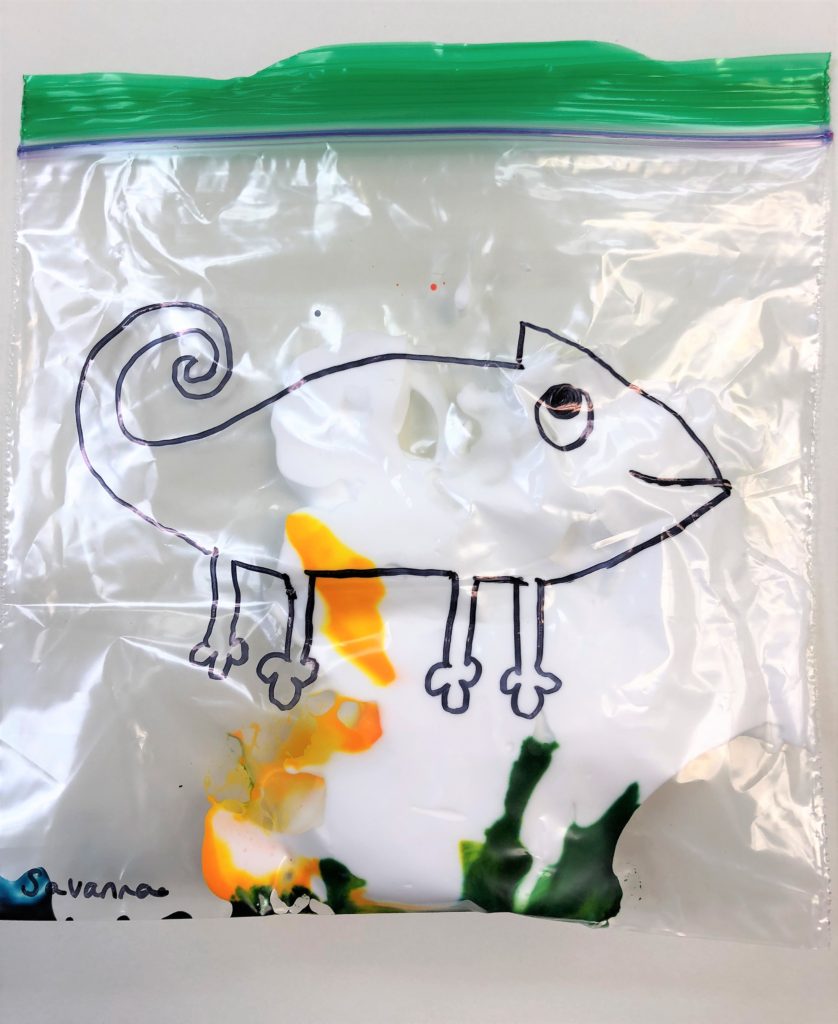
Step 3
You can already see the colors mixing which is very exciting! I recommend clearing as much air out of the bag as possible before you zip it closed. This will prevent the bag from popping and shaving cream oozing out. This picture demonstrates the color mixing and the potential for ooze.
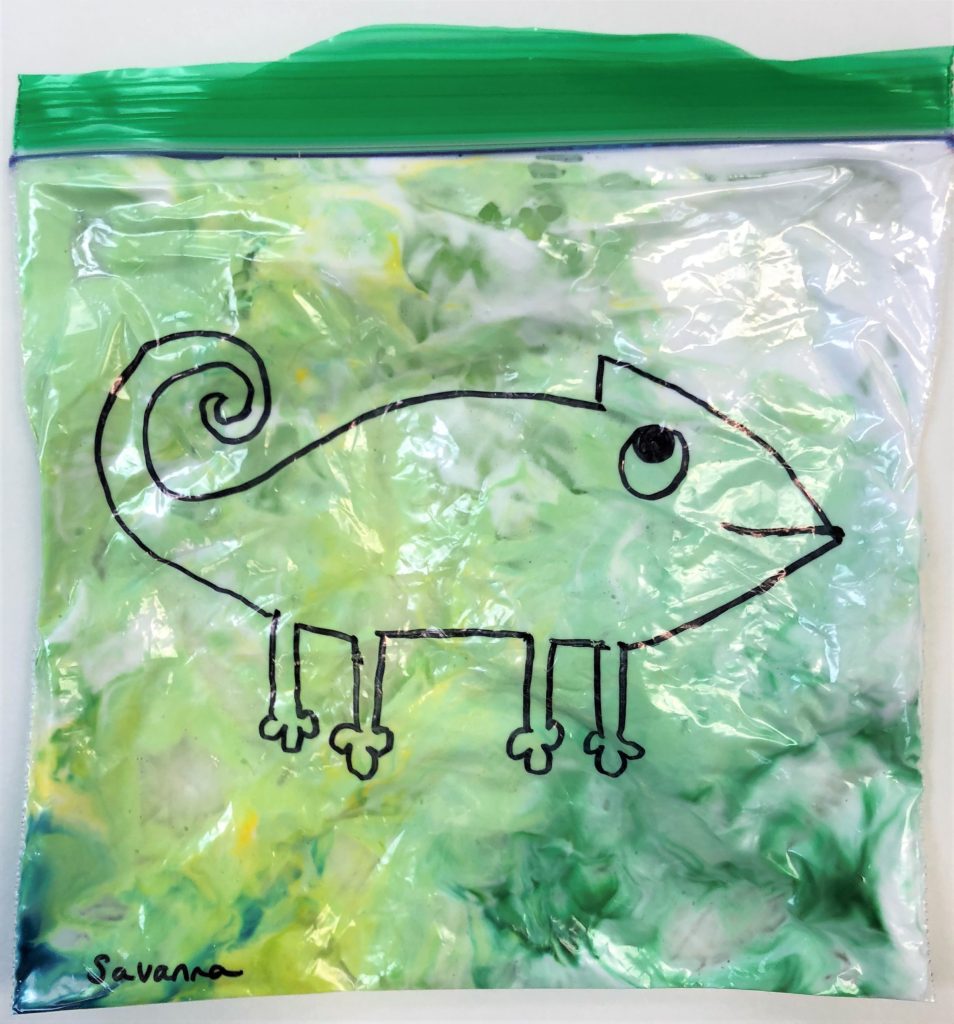
Students take these home.
Day 2
I created this power point using Disney characters to reemphasize Color Theory. Ask the students to list at least one Disney character that represents one of each of the types of Color Theory you are learning. Then, show them the power point to really reinforce the vocabulary. Click Here
*Primary
*Secondary
*Complimentary
Have students color in a rainbow worksheet. I got this one from this great website Click Here
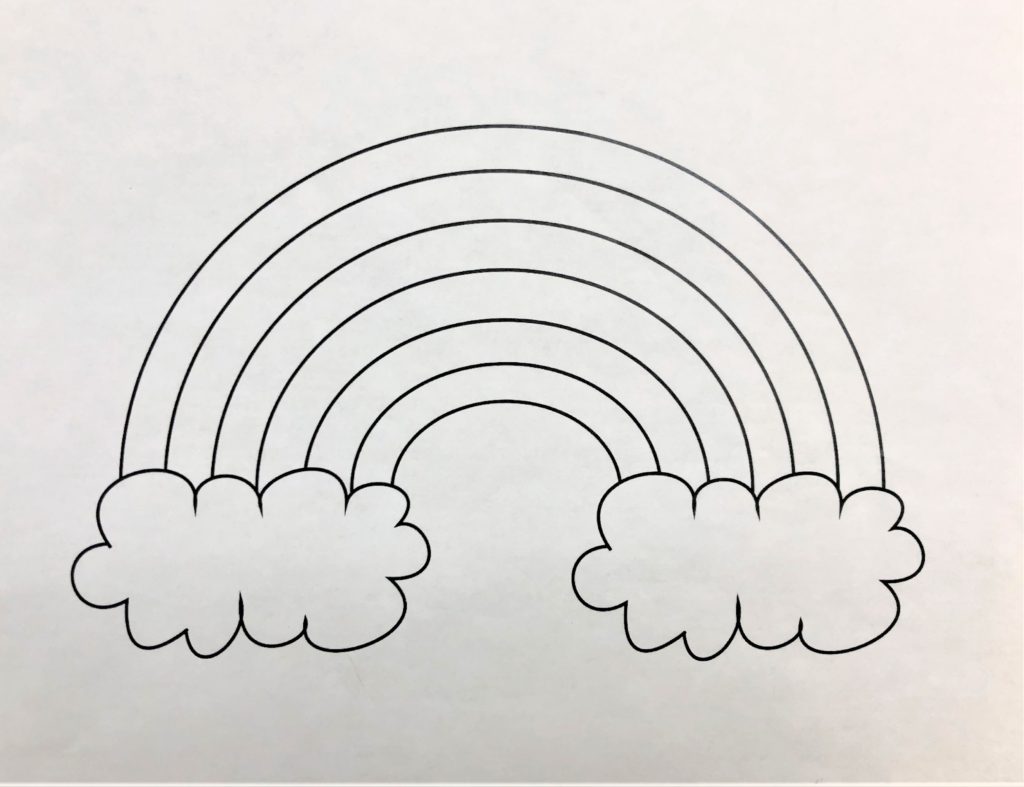
Day 3
This is a learning about chameleons and practice day.
I watched many videos on Chameleons. Many of the coolest ones are not scientifically accurate. Many people have posted videos of Chameleons changing color on cue but they are mostly photo shopped. This one below, I believe has the best info. I only showed my 1st graders the first two minutes where they cover the disguise of the chameleon. But feel free to use this opportunity to look at how color can be a survival tool.
10 Amazing Creatures With Camouflage Superpowers: Click Here
Show students the basic steps for drawing a Chameleon on the white board. Then ask them to follow along on a practice paper. I ask them to look at a finished chameleon and tell me what shapes they see before I begin drawing. I also have them tell me which shape belongs on which part of the chameleon. This allows them to be part of the directed drawing. Win! I used a piece of 8×10 copy paper for the practice drawings and folded it in half. This gives them the opportunity to do four practice drawings.
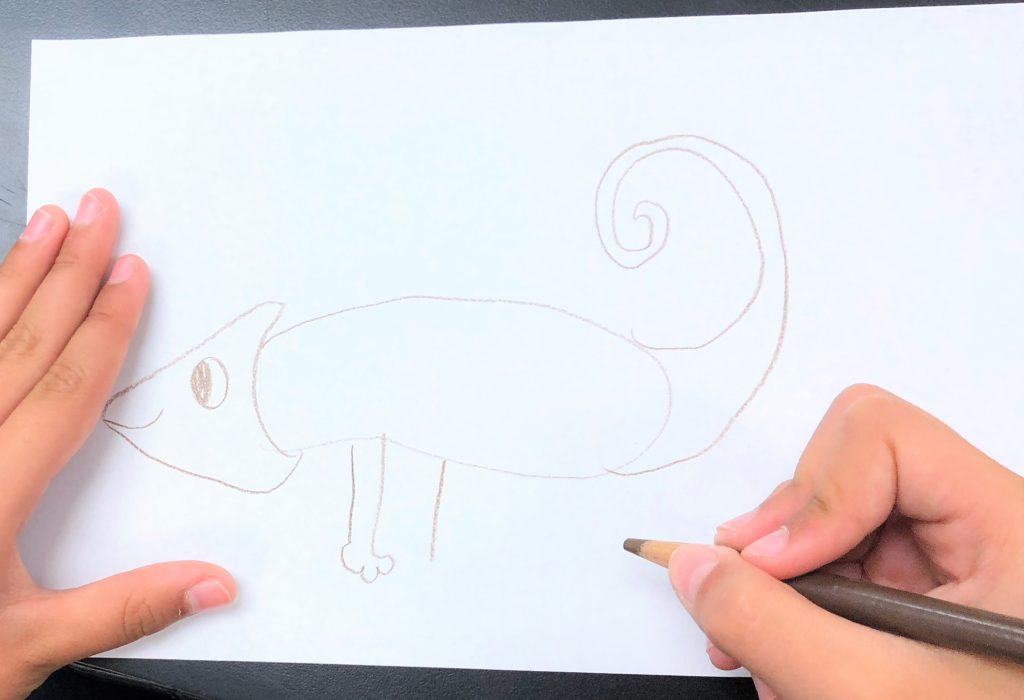
Day 4
On a piece of 4.5″ x 6″ size watercolor paper (half of a 9×12), have them make their final drawing. Remind them to make him big. This was reinforced on the practice drawings.
Have them trace over all their lines with sharpie marker. And then erase any lines that are still showing.
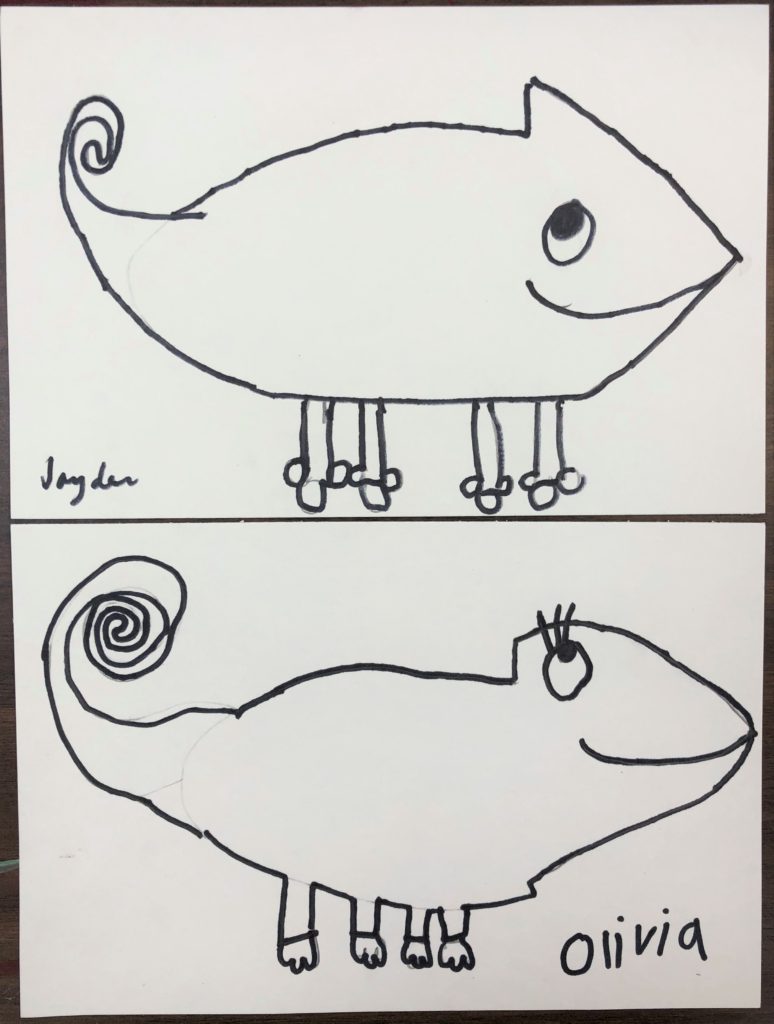
Day 5
Watercolor day!
I set out a row of watercolor paints. I included the 6 main colors plus magenta. We discuss the mix of red and purple for this color.
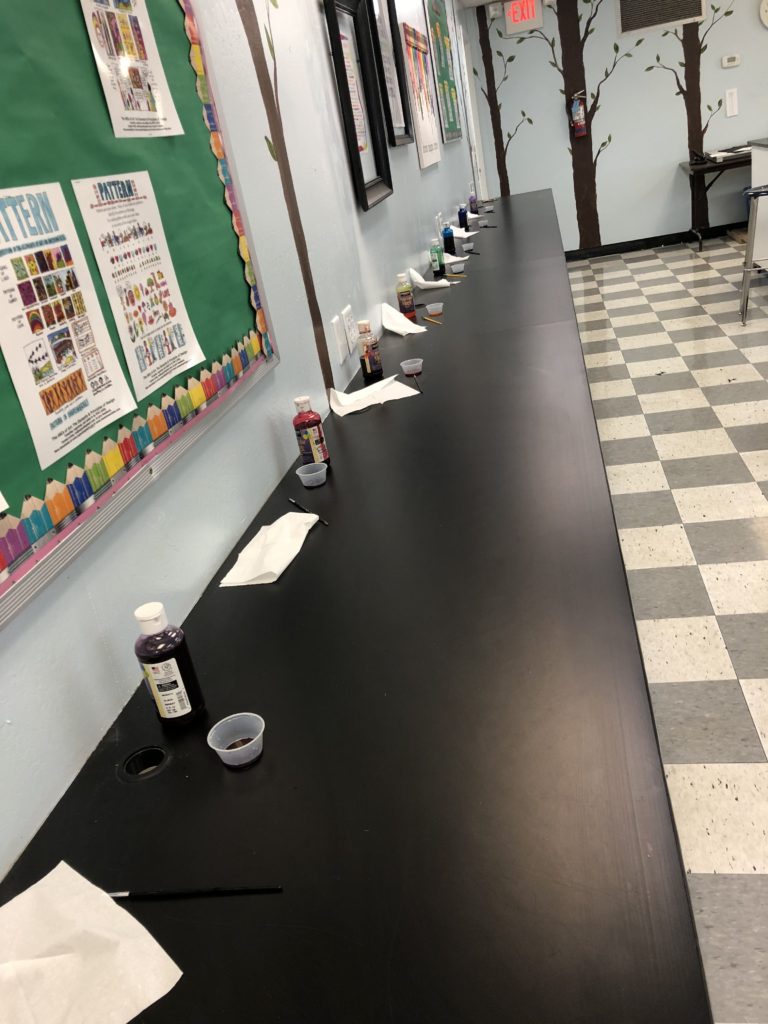
Students are asked to add paint to their chameleon using all of the colors in any fashion they would like. While I encourage them to do them in order, I feel like just acknowledging the rainbow colors found in any artwork is a win. Once they are finished painting, they are set aside to dry. I personally cut out the chameleons for the students because of the detailed nature and size of these chameleons. Those legs and that tail are tricky even for me!
Day 6
Today we added the cutie creatures to a background. Since chameleons are normally green, we put them on a green background to encourage our colorful guys to change into their normal state. Haha pretty clever right? I tore long strips of brown, and little bunches of green and pulled students a few at a time to glue their parts together.
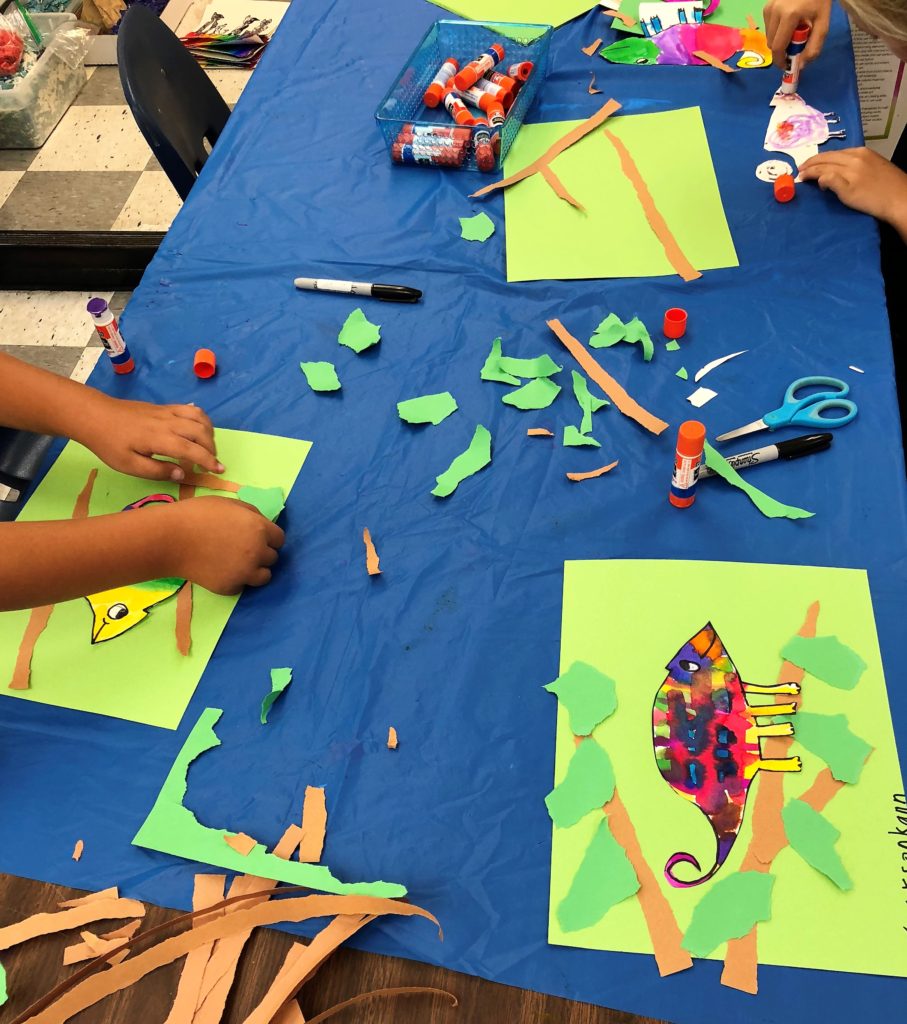
Here are some finished Color Chameleons!
Common Core Standards
K-2 – Language Arts
Children’s adventure stories, folktales, legends, fables, fantasy, realistic fiction, and myth Includes staged dialogue and brief familiar scenes. Includes nursery rhymes and the sub-genres of the narrative poem, limerick, and free verse poem Includes biographies and autobiographies
Kindergarten – Science – Life Sciences
2. Different types of plants and animals inhabit the earth.
a. Students know how to observe and describe similarities and differences in the appearance and behavior of plants and animals
b. Students know stories sometimes give plants and animals attributes they do not really have.
c. Students know how to identify major structures of common plants and animals.
1st Grade – Science – Life Sciences
2. Plants and animals meet their needs in different ways.
a. Students know different plants and animals inhabit different kinds of environments and have external features that help them thrive in different kinds of places.
2nd grade – Science Life Science
2. Plants and animals have predictable life cycles.
d. Students know there is variation among individuals of one kind within a population.
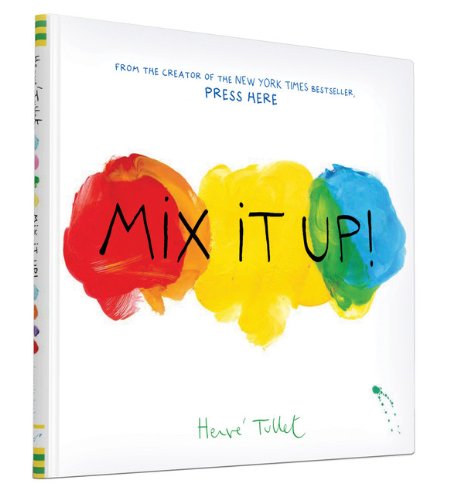
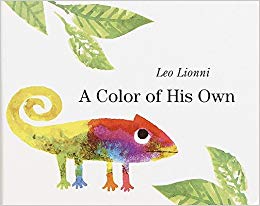
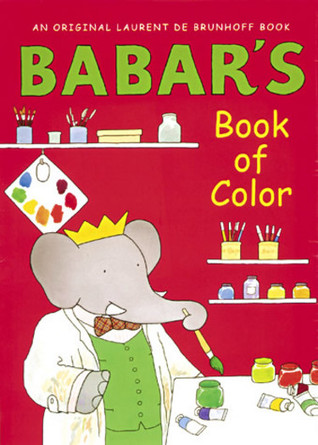
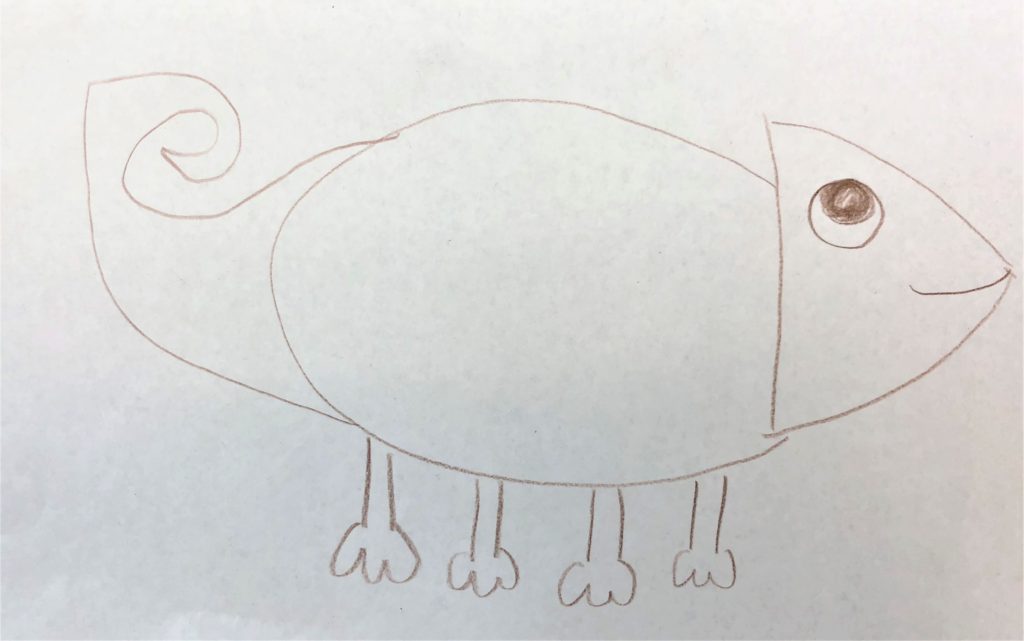
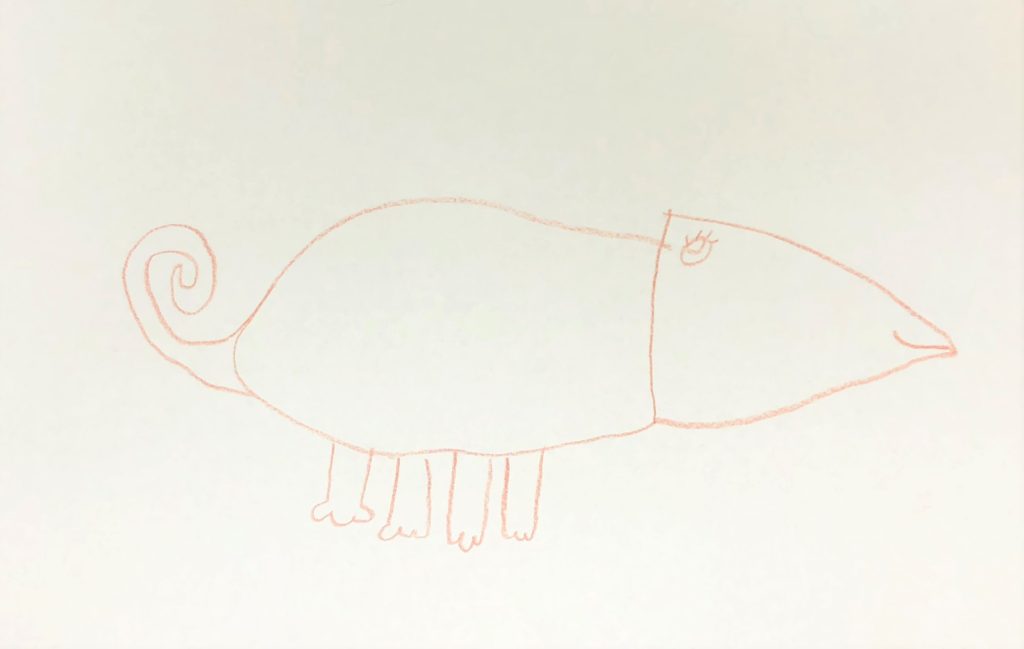
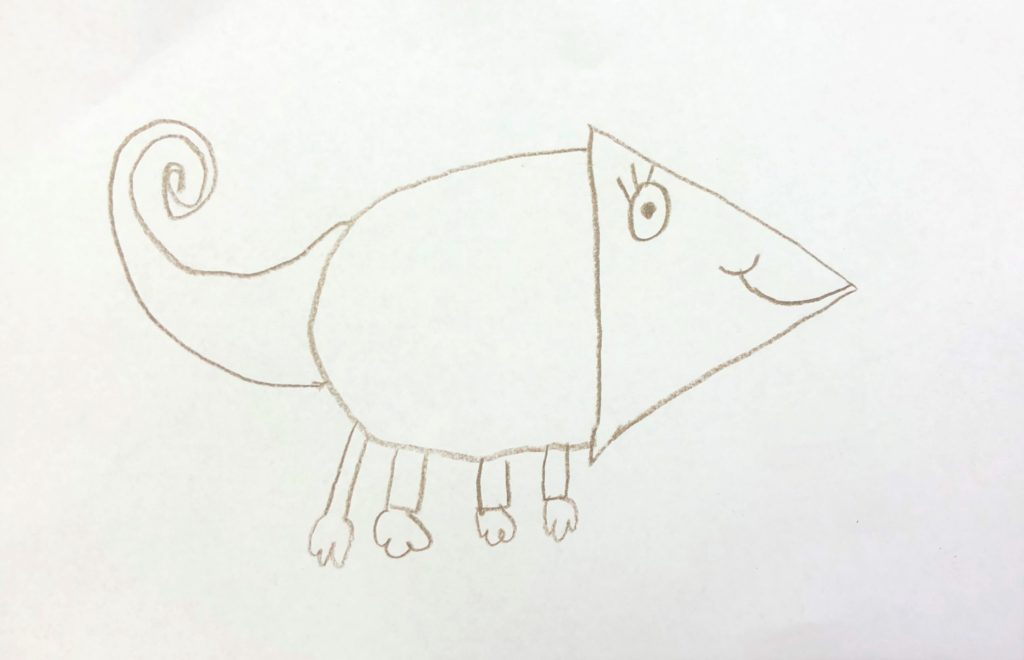
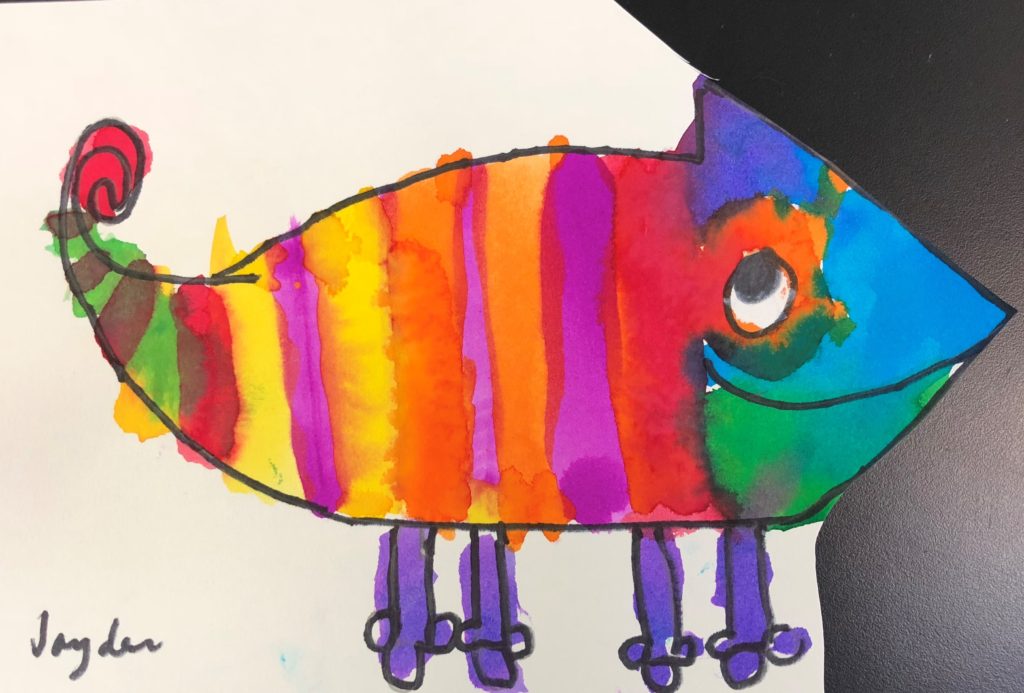
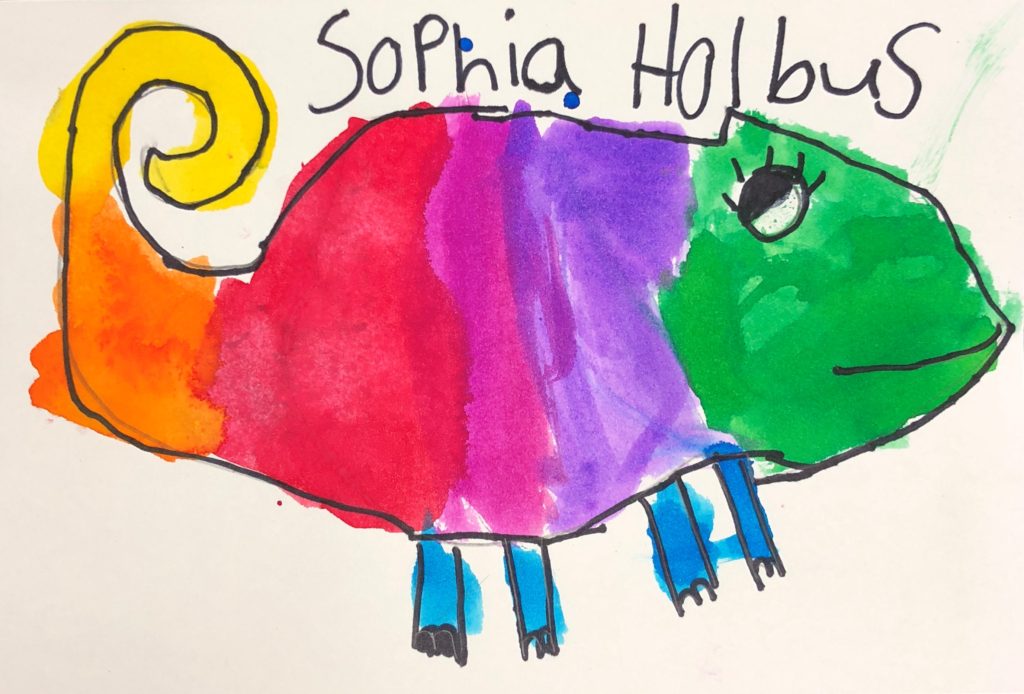

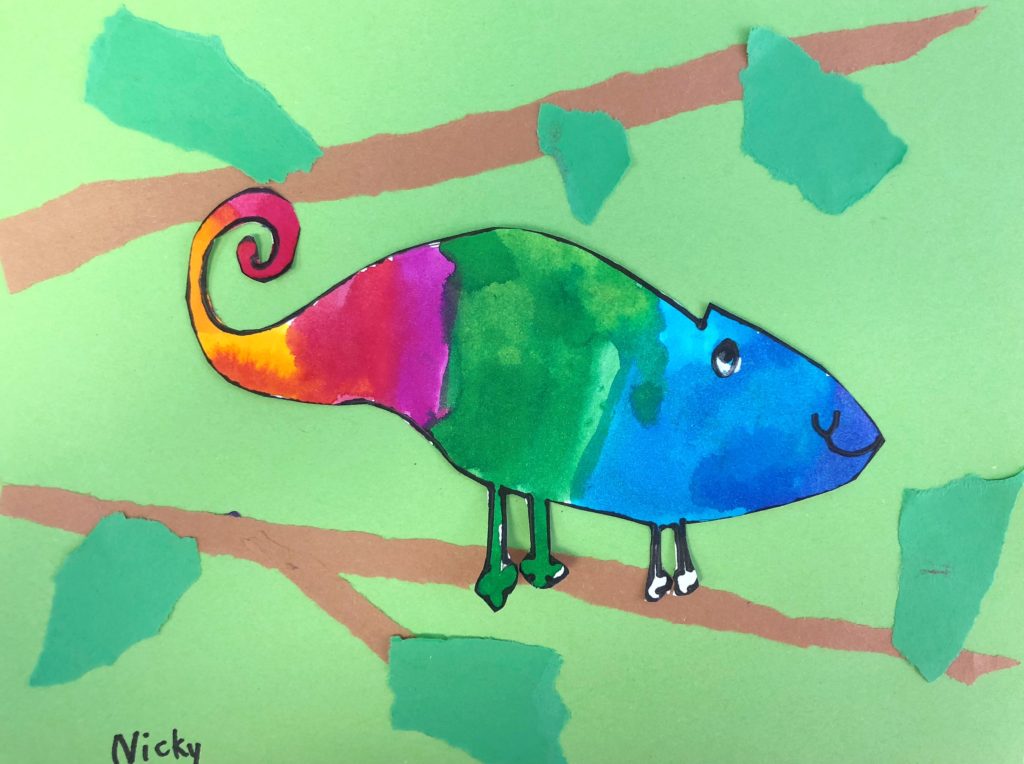
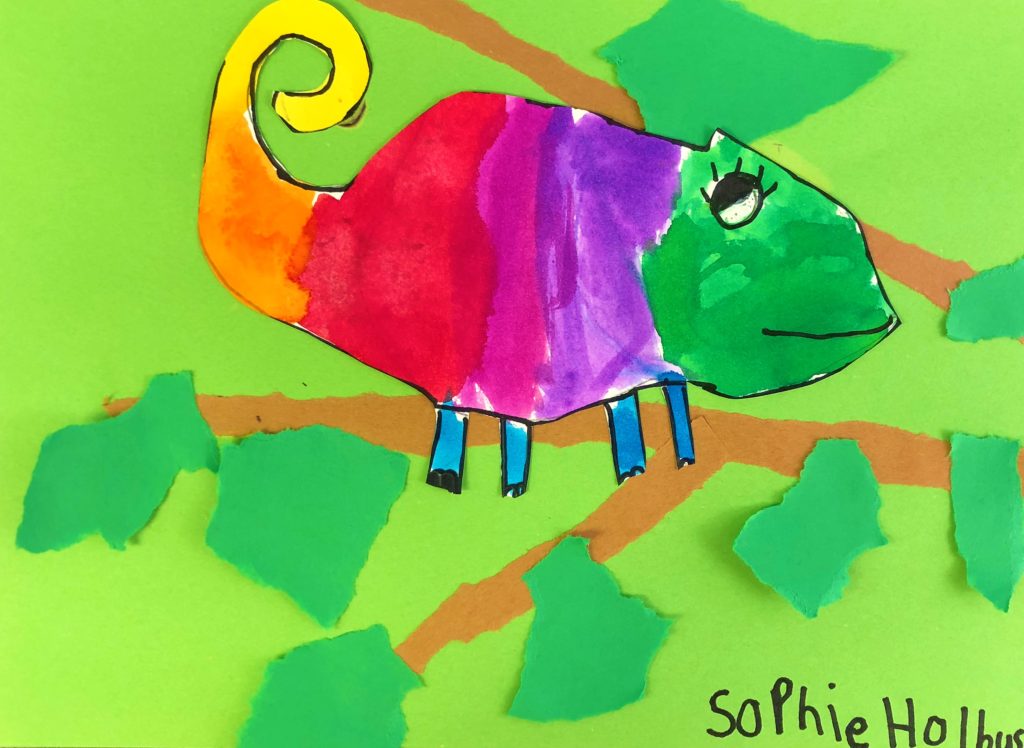
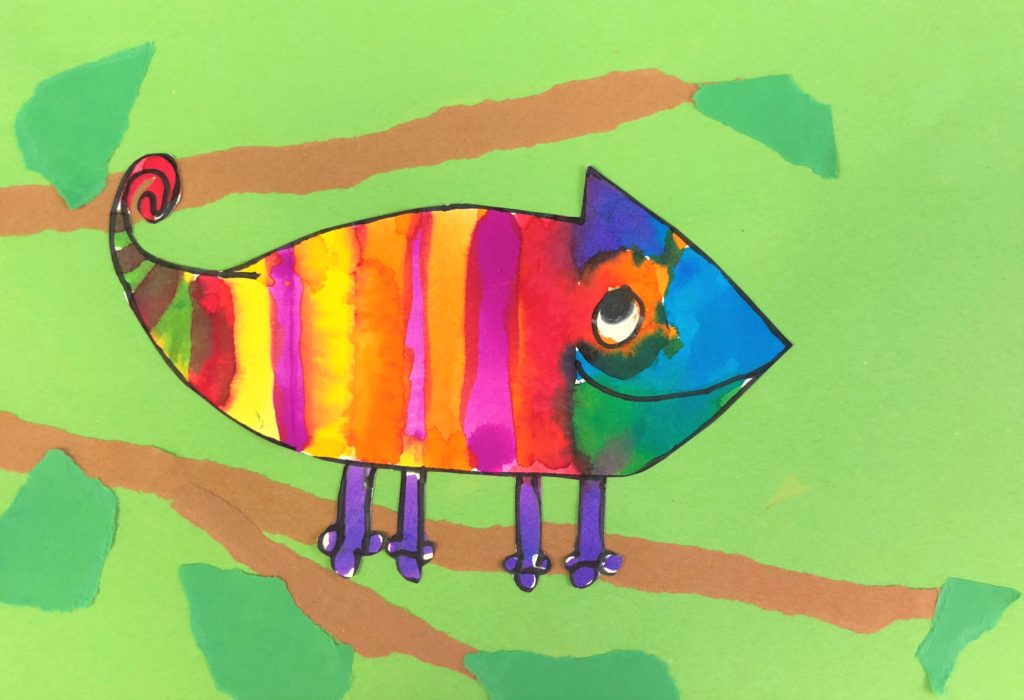
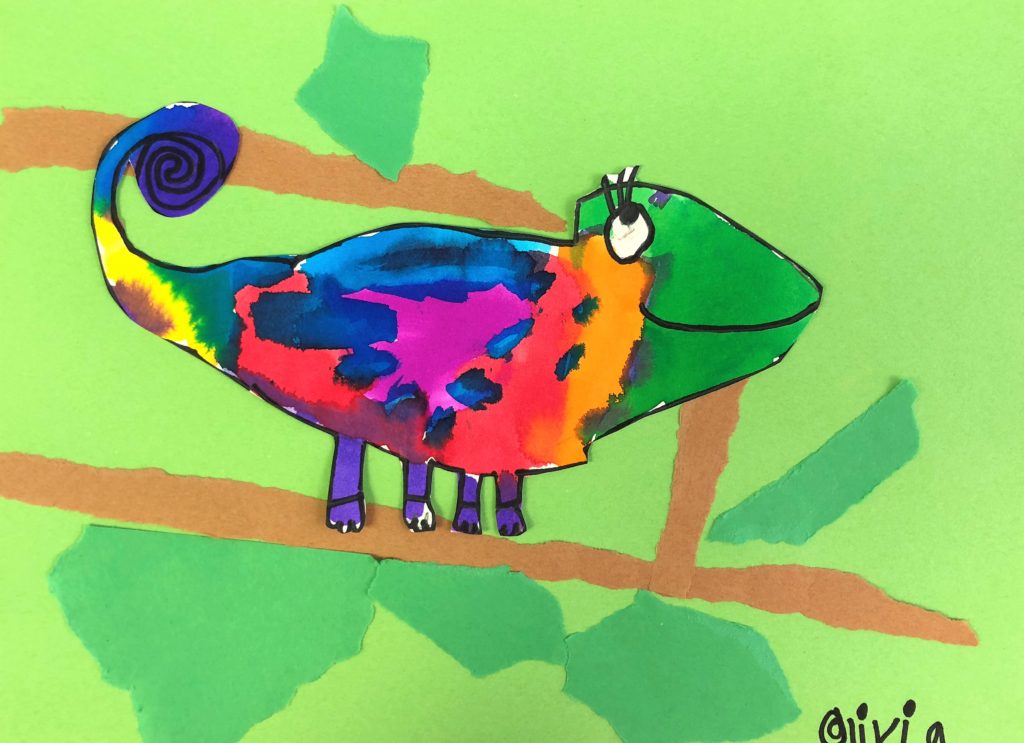

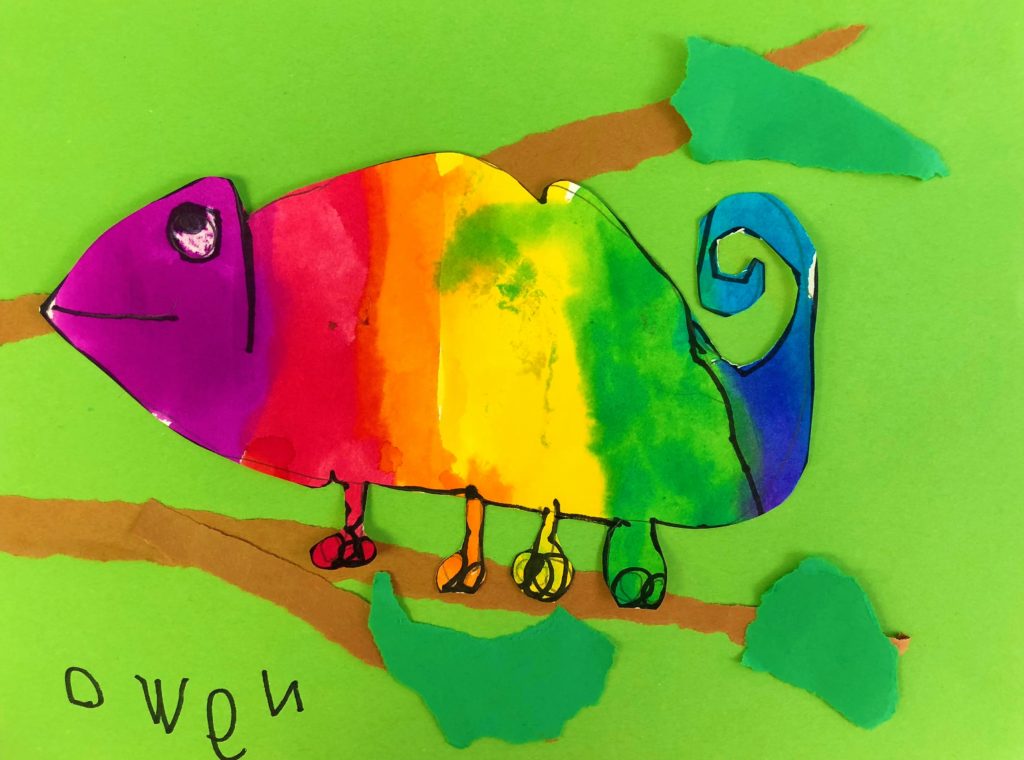
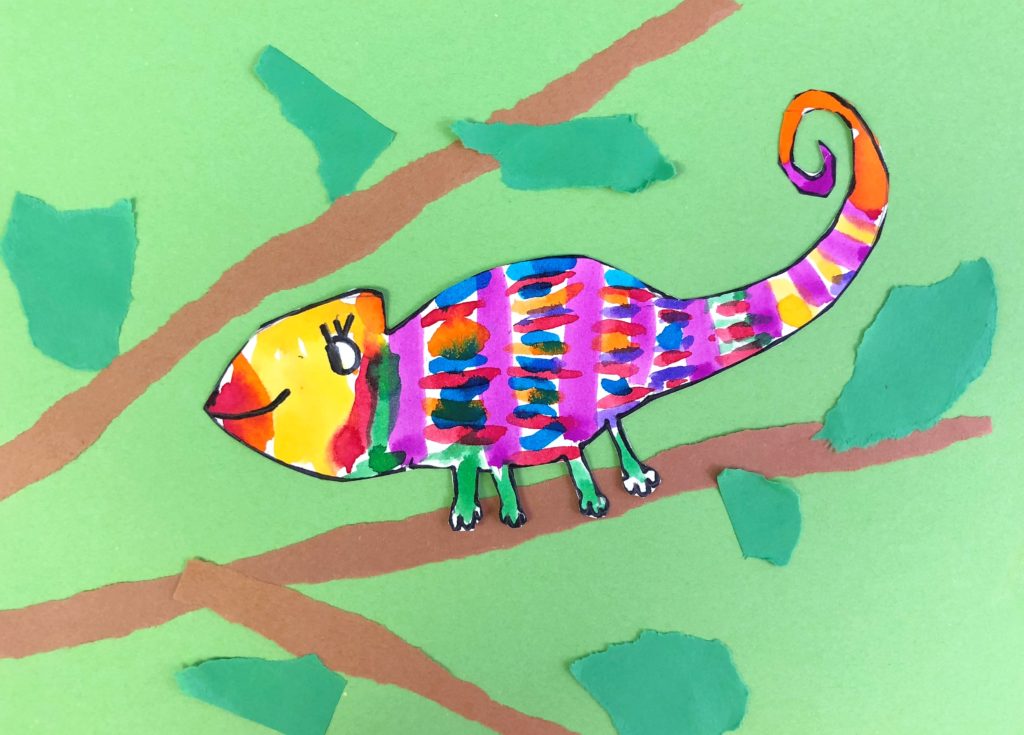
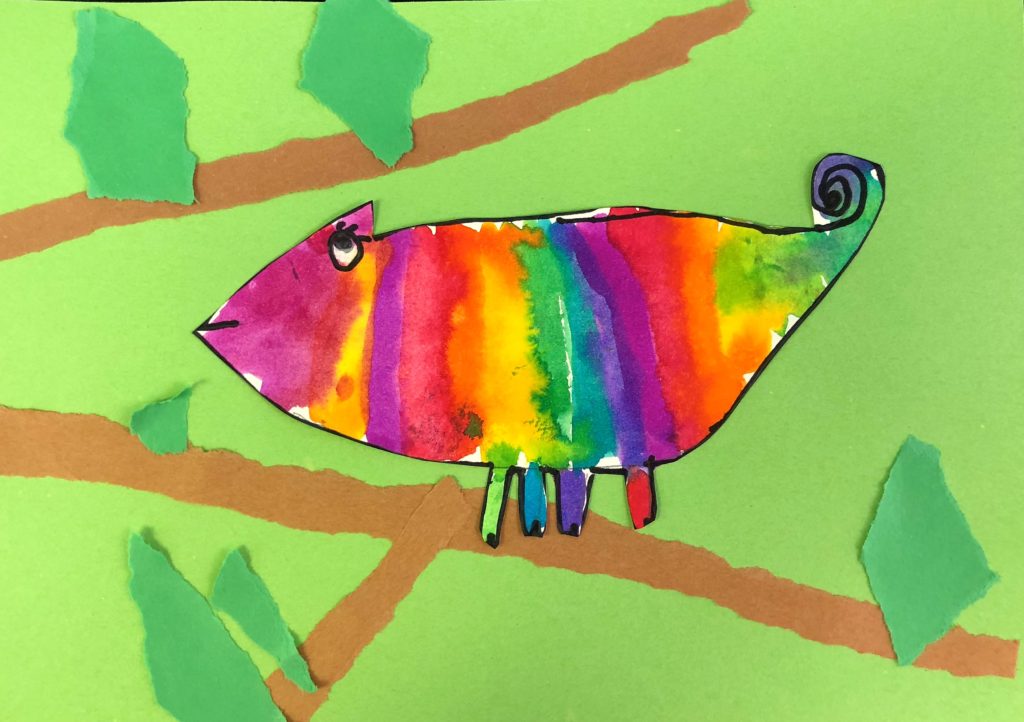

Leave a Reply